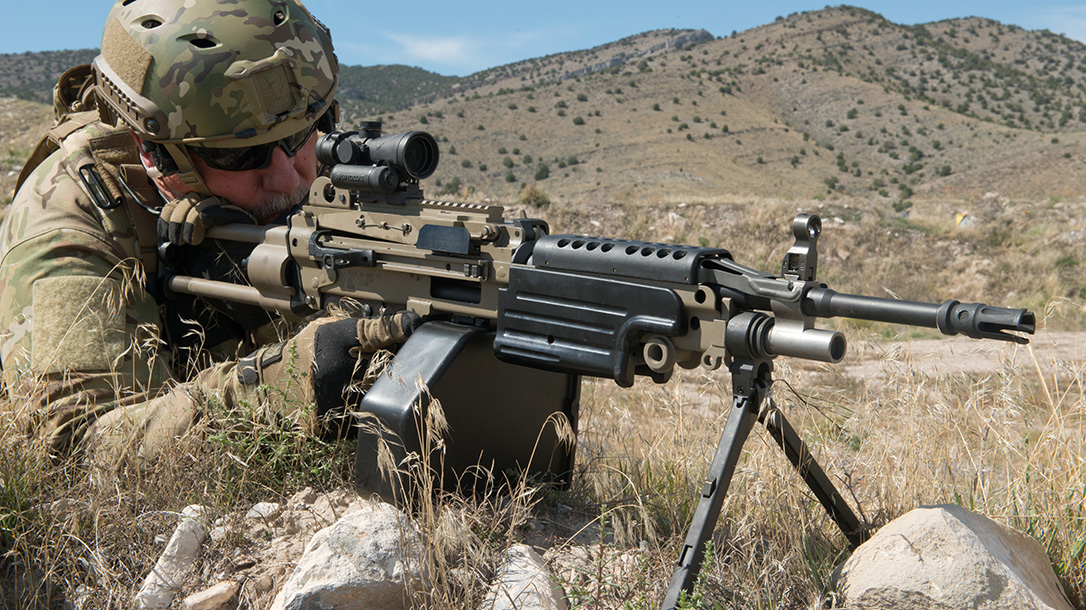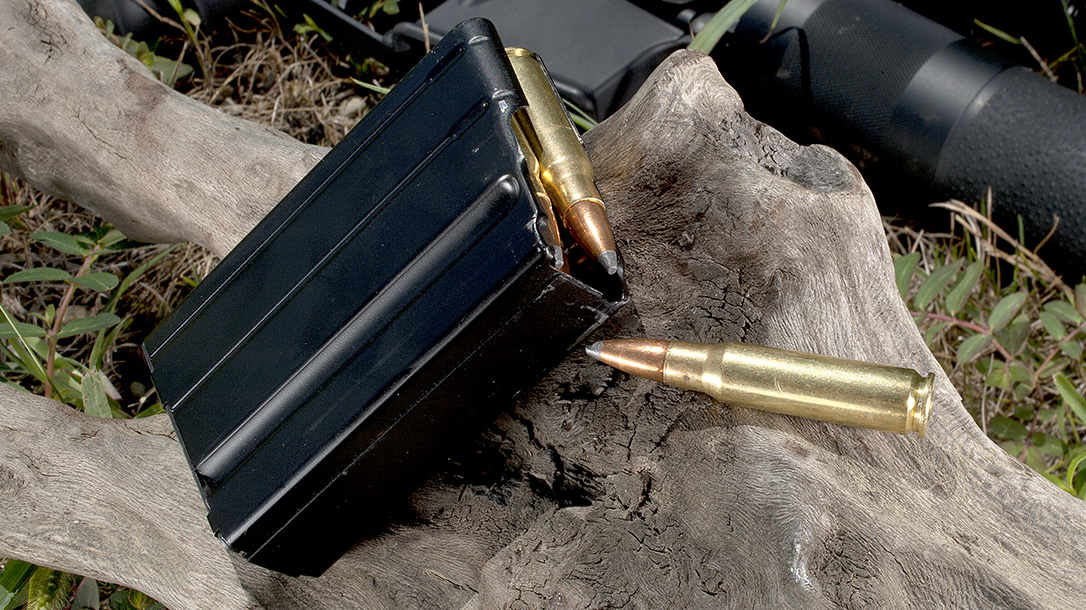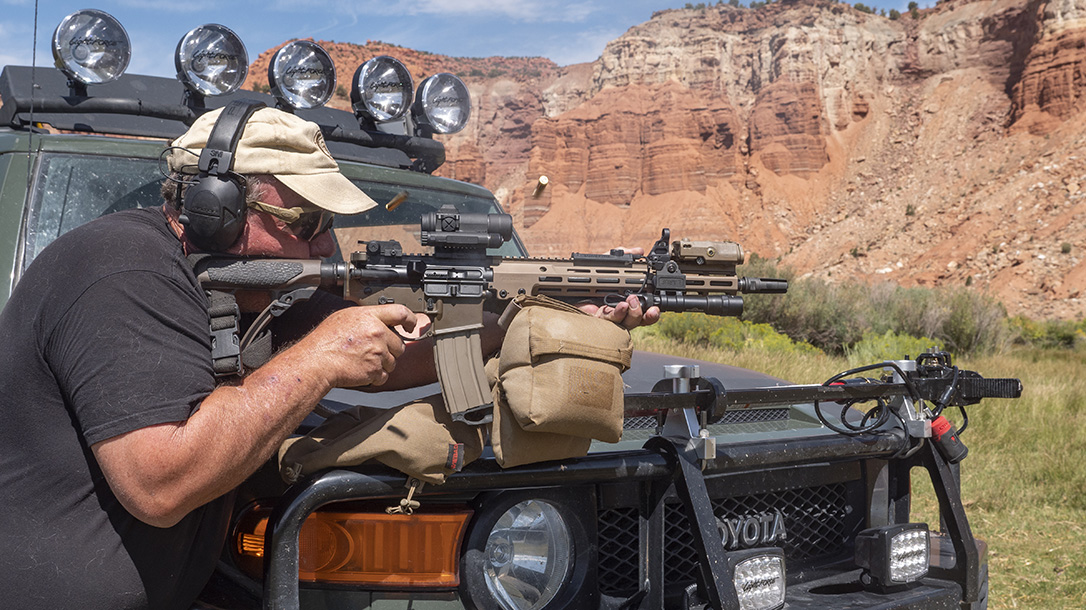Winchester Ammunition announced major news today. The U.S. Army awarded Winchester a contract to manufacture, test and deliver 5 million 6.8 Next Generation Squad Weapon (NGSW) cartridges. The Lake City Army Ammunition Plant, ran by Winchester, will produce the ammo.
“The award of Lake City’s first production order of the 6.8mm NGSW cartridge represents several years of hard work, dedication, and collaboration between Winchester, the U.S. Army, and industry partners,” said Brett Flaugher, President of Winchester. “The Winchester team is honored to have been entrusted with the opportunity and responsibility of producing the ammunition which will keep our nation safe for years to come.”
On Nov. 9, 2018, Tactical Life’s David Bahde reported:
Advertisement — Continue Reading Below



Advertisement — Continue Reading Below
A few weeks ago we found out the U.S. Army was switching to 6.8mm for its new weapon systems. A brand new U.S. Army 6.8mm round? The announcement caused the usual Digital Age uproar.
Fans of the 6.8 SPC reveled in vindication to their dedication to the caliber. Every fan of other calibers languished in “why not me?” mode.
The debate, if that’s what you want to call it, was entertaining for sure. It’s what everyone with nanosecond attention spans living in the social media world does. Facts become somewhat irrelevant or inconvenient. And details, well, what are those? Who cares? In a few days it will be replaced by the next “event.”
Advertisement — Continue Reading Below
So, is the 6.8 SPC — or any other current 6.8mm round — going to “replace” the current 5.56x45mm (.223) or 7.62x51mm (.308) round in the Next Generation Squad Weapons (NGSW)? No. In fact, any current ammunition is unlikely to; that’s why it’s the next generation.
What Is a Prototype Opportunity Notice?
U.S. Army Contracting Command posted a Prototype Opportunity Notice on Fed Biz Opps in early October. It called for “two weapon variants and a common cartridge for both weapons, utilizing Government provided 6.8 millimeter projectiles.”
A PON is pretty much what it says: An opportunity to build a prototype based on certain requirements. It says, “Hey, this is what we want. Can you do it? If so, tell us how you can and what you can do.”
Advertisement — Continue Reading Below
A PON outlines what the Army wants with “specifications” ranging from broad to specific, followed by industry input.
The original PON provides an outline, mostly centered around a lightweight weapon using ammunition that weighs 20 percent less than current offerings.
The U.S. Army awarded five different companies the chance to build the Next Generation Squad Automatic Rifle (NGSAR). The companies include SIG Sauer, FN America, Textron Systems, General Dynamics and PCP Tactical. FN is submitting two variants.
Advertisement — Continue Reading Below
The cartridge-based PON from early October further defines the end goal as a “6.8mm General Purpose cartridge.”
Just as critically, it’s the bullet; those building the weapons will be doing the rest. One thing is for sure: It’s not the 6.8 SPC. So then what is it?
General Purpose Cartridge
The PON references a currently classified drawing, bottom line, no idea right now, at least not officially. We do know it’s not the 6.8 SPC or any currently offered or fielded projectile.
Advertisement — Continue Reading Below
The basic requirement remains 20 percent less weight than the current offering; that is not the 6.8 SPC or anything else out there.
The delivery date is 27 months. We are talking a couple years to deliver prototypes and that assumes it will not be extended. So details will be scant unless “leaked” at some level, which, although a felony, might still occur since leaking seems to be rather in vogue.
Advertisement — Continue Reading Below
So what exactly is a General Purpose round? Within context this goes all the way back to an Army study completed in the 1920-30s. The idea was to create one cartridge that meets most requirements across all general platforms. Specific tasks like hard targets and sniper rifles may differ, but one for everything else.
The study concluded it needed a bullet weighing at least 120 grains. However, nothing larger than 130 grains provided any advantage.
Diameter had to be at least 6.5mm and no larger than 7mm; probably a starting point for using modern bullet designs and the Army’s most recent development of the 6.8mm GP round based on similar testing.
Advertisement — Continue Reading Below
Given a typical engagement range from muzzle contact to 800 yards, you want to retain enough velocity to be “ballistically effective” at extended ranges. U.S. Army Chief of Staff Mark A. Milley commented this round will “penetrate any existing or known body armor out there.”
That is a tall order, and will require velocity and armor piercing bullet construction. Lots of stuff in either 6.5 and 6.8mm can do that, most with muzzle velocities in the 2,800 fps range leaving the 6.8 SPC out of the running.
The General Purpose round is going to be something closer to the hotter 6.5mm loads to meet the velocity need; it would need to be maybe as fast as 2,800-2,900 fps to meet those requirements.
Weight Is Everything!
Much of the Army 6.8mm requirement is about weight.
Using only brass will make it difficult to meet the “20 percent lighter” requirement, which brings us to polymer cases.
Companies like PCP Ammunition are a good example, advertising a 30 percent reduction in weight. With several loads available (including 6.8 SPC), they are involved in the production of lighter ammunition for the military.
Another promising technology is a composite using a combination of metals presented this year by SIG Sauer at the AUSA. Bullets will probably be 120 to 125 grains with a higher ballistic coefficient for longer range, maybe even a Hybrid Ogive with muzzle velocity in the 2,800 fps range.
They will have to meet the current “conventions,” so an OTM or FMJ — or something similar to the current M855 A1 — is likely. The important aspect is that it’s not likely to be anything we see now — hence the need to keep it restricted.
Unlike some previous attempts, this will be purpose-built for the military — not a cross-purposed round.
Bottom Line on the Army 6.8mm Round
Speculation is rampant right now, and will be for the near and extended future. There are lots of arguments and speculation by “experts” of all shapes as to why it should be something else. Unless and until there is some “leak” with actual information on the bullet, this is all we are going to get about the specifics.
It’s also important to remember these things can change on a whim; it’s why you have prototypes built. Not to mention, these things are often driven by politics and, just as importantly, funding.
Another presidential election will hit about the same time as this ends. I am hearing capital is being diverted from an already existing fund, at least for the prototypes. After that, all bets are off. The world is littered with canceled projects from military requests nixed by Congress, a new president or even a change in military leadership.
From all that can be seen, the new round will be different, more powerful and more practical across the board; that is intriguing enough. These opportunities drive innovation with a huge incentive in the end. Many have resulted in much of what we use outside the military today.
The final results of the Army 6.8mm trials could be impressive, along with lots of stuff learned along the way — that makes it worth the wait.























